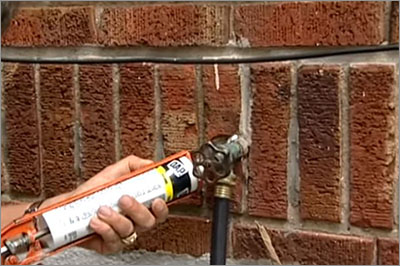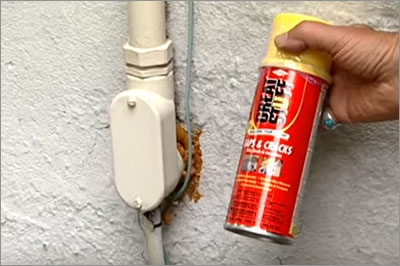You may think that August is too soon to begin thinking about sealing air leaks in your home. But for me, I would rather do the outdoor work during the fair-weather months. Not a big fan of the cold! Not to mention, that you will have difficulty sealing air leaks using caulking if the temperature is below 45 degrees Fahrenheit. This is the minimum recommended temperature for applying caulking, as set forth by the department of energy and most caulking manufacturers. You should also pay attention to the weather forecast and avoid applying caulking if there is a chance of rain or snow later in the day. You need to allow 24 hours for caulking to fully cure.
Checkout this Video, with Tips on Sealing Air Leaks in Your Home
Special thanks to the folks at GoColumbiaMo.com
Sealing Air Leaks Around Windows & Doors
Inspect all windows and doors and look for cracks where any two surfaces meet. You will likely discover small gaps between the window frame and the surrounding structure of the home such as the brick or wood siding. If you find gaps or cracks in the adjacent concrete or brick facia itself, you can fill those areas with a concrete & mortar sealant.
If gaps are found between the wood trim and the surrounding brick, you should use an acrylic based caulking. This will be suitable for painting once the caulk has fully cured. Use the same method to fill the gaps between the window and wood siding.
Sealing Air Leaks Around Utility Cables
As you walk around your home pay close attention to the areas where the utilities enter your home. For instance, you may find an over sized hole drilled in the siding where your TV cable lines pass through the exterior wall of your house. A quick squeeze of caulking will fill this gap.

The opening around gas pipes, water spigots, air conditioning lines, and electrical power lines could be much larger. In this case, fill the large space with expanding foam insulation. They call this “Great Stuff” for a reason. Just point and shoot, and as the foam expands it fills the entire void. Great Stuff!

You can also use Great Stuff expanding foam to fill large gaps between the siding and wood trim. However, you will need to cover these areas with strips of wood since the foam isn’t well suited for full exposure to the elements.
Sealing Air Leaks in Your Basement
The first place to look in your basement or crawlspace is the point where the baseplate and sill-plate meet the wall. As your home shifts over the years, huge gaps can develop in this area. For larger gaps, stuff the space with pink insulation. Smaller gaps can be filled with conventional caulking. If you happen to notice any tiny cracks in the concrete or block wall, you can fill these gaps with concrete repair sealer by Quikrete.
Don’t forget the Basement Windows
You may discover large gaps around the basement windows on the inside of your home. Stuff the space with backer rod, then apply a bead of caulking over the backer rod to completely seal the window.
Do you need a window inspection or assistance locating air leaks around your windows? Contact our support team at (815) 634-8922.